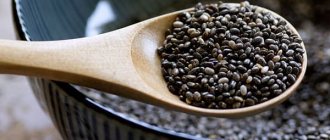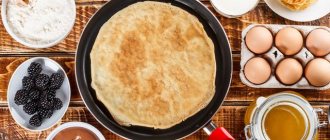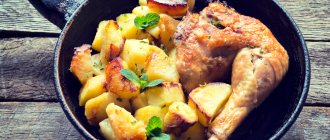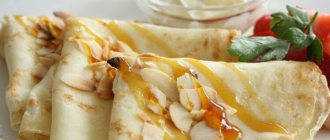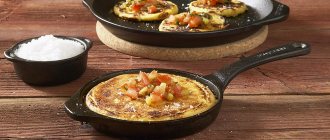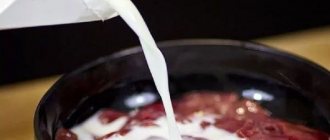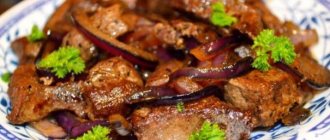The first pancake is lumpy - not such a rare occurrence. True, often the first is followed by a second, a third... They stick together, tear, stick, burn... Both a novice housewife and an experienced one can encounter such a problem, because this problem does not have one single cause. If pancakes stick to the pan, it is important to know all the reasons in order to understand exactly how to act in each case.
Why do pancakes stick to the pan?
Pancakes can stick even for experienced housewives. They break when you try to turn them over, burn, stick to the pan, even though everything is done according to the recipe.
There are many reasons why pancakes stick. Among them:
- non-compliance with the recipe;
- the consistency of the dough is not prepared correctly;
- the frying pan coating is damaged;
- The pan is not hot enough.
It is necessary to thoroughly study these problems. Then your pancakes will always turn out great.
Tip 1 - choosing a frying pan
Many people advise using a separate frying pan for cooking pancakes. The advice is correct, but only partly. It all depends on what metal your frying pan is made of. If it is made of cast iron or aluminum, everything is correct, but this advice does not apply to other frying pans. Why? The fact is that on cast iron and aluminum frying pans, during frying, a hard film of fat is formed, which prevents the pancakes from sticking. The same film, by the way, protects cast iron from rust.
Of course, after pancakes you will wash the pan, but after one wash the film will not be washed off, this will help you cook pancakes successfully next time. If you wash the frying pan several times after preparing various dishes, the film will be washed off, and the next pancakes will start to burn again until the frying pan “gets used to it,” gets old and becomes “contaminated” with burnt oil.
Non-compliance with the recipe
Many experienced housewives use the recipe “by eye”. It turns out that some ingredient may be missing, but some will be in excess. Some examples:
- a large amount of soda will cause the pancakes to tear when you try to turn them over or stick to the pan;
- The pancakes will be pale and crumbly if there are not enough eggs.
It happens that you made a mistake when preparing something or the proportions were incorrectly indicated in the recipe. You need to somehow get out of the situation and add something to the dough.
Eggs
For pancakes, the gluing component is chicken eggs. They also give this dessert elasticity and rosyness. Some recipes don't mention this ingredient at all. And then the pancakes will tear and turn over poorly. In this situation, you need to add 2 eggs to the dough. If there is no result, add more.
After adding eggs, the pancakes will turn out to be a more beautiful shade, there will be no dry edges, and the frying speed will be higher.
Soda
When preparing pancakes with sour milk or kefir, baking soda is added to the dough. This ingredient makes the final product more airy and removes excess acid. Excess soda leads to a decrease in stickiness - the pancake does not turn over well.
If you overdo it with soda, make a separate batch. Just don’t add soda here anymore. Mix them.
Oil
Pancakes will turn out with a special taste and very soft if you pour vegetable oil into the dough. It also reduces the chance of sticking.
Sugar
The dessert may stick to the pan if there is excess sugar in the dough. A “caramel” effect may occur. So you don’t need to add a lot of sugar; it’s better to serve the sweets with the finished dish.
Why do pancakes made with kefir and milk stick?
Kefir makes pancakes unusually tender and thin. But that is why they are often difficult to remove. For baking to go smoothly, you need to cook them in a thoroughly washed and dry frying pan, turn them over with the thinnest spatula, and be sure to add vegetable oil to the baking mixture.
Pancakes made with milk can stick for two reasons: either the milk is too thick, or it was not very fresh and during the cooking process it began to sour right in the dough. In the first option, you need to dilute the milk with water in a 1:1 ratio (or add water to the finished dough). In the second, neutralize the formed acid. To do this, add a little soda and flour to the mass, and also slightly dilute it with boiling water.
Always cook pancakes with the freshest milk to avoid this problem. Then you won't have to fix anything.
Incorrect dough consistency
The result largely depends on the consistency of the dough. Thick and dense pancakes are obtained with a thick mixture. A completely liquid dough will cause the pancakes to stick to the pan as the water evaporates and become brittle and dry.
By adding flour, milk or water you can avoid problems. To prevent lumps from forming during mixing, the milk and water should be warm. If these ingredients turn out to be hot, the taste of the pancakes will deteriorate.
The consistency of the finished dough should be thinner than sour cream, and thicker than kefir.
Tip 8 - Don't use a new frying pan
Do not use a new pan under any circumstances. Even if you have carried out all the recommended manipulations with it - calcination, steaming, and so on. The new frying pan will not cope with pancakes one hundred percent, it is its fault, and you will be responsible. Is it necessary? We would generally advise using the oldest frying pan whenever possible; this technique has been confirmed by many housewives.
We could go on and on, but these tips are quite enough. Each of us has our own little secrets and considers only them to be the only correct ones. One more thing. Many people think that this advice can be ignored, but this is not at all true. By the way, if we again turn to folk wisdom, it confirms our advice. Cook pancakes in a good mood, love both yourself and those for whom you cook.
The good mood will definitely rub off on the pancakes, and they will try to maintain it! And even if something doesn’t work out, it’s not a global catastrophe, not a great grief! Don't take everything to heart, more smiles and joy. Then even this pancake, which is “lumpy,” will seem the most delicious to your household.
Problems with pan coating
A damaged pan coating can be another cause of the problem. Most often this occurs with an old or new frying pan.
Currently, consumers are presented with a wide selection of cookware. It is better to choose a pan for making pancakes made of cast iron, aluminum or with a non-stick coating. When using such dishes, a thin layer of fat is formed. In this case, the pancakes do not stick.
Problems may arise when purchasing a new frying pan. To avoid this, you should familiarize yourself with the following recommendations:
- You can safely start cooking pancakes in a new frying pan after the so-called “break-in”. A fatty layer forms on the surface after frying something in a frying pan.
- Heat the pan after purchase. Pour salt into it and heat it in the oven or on fire for an hour. Pour out the salt after calcination, lubricate its surface with lard, fat or oil.
The pan must be cleaned after use, as this may be another cause of the problem. To prevent pancakes from sticking, here are some recommendations for cleaning a frying pan:
- You can use regular detergents to clean the dishes. After using them, wash the pan thoroughly and dry. Grease the dish with oil.
- You shouldn’t stop at detergents alone. Fill the pan with water and add a little baking soda or salt and leave it like that for a while. Then wash and dry. The result will pleasantly surprise you.
- It is recommended to use soft sponges or rags when washing pans on which pancakes are fried.
It is prohibited to use hard brushes and iron sponges to clean the frying pan. There is a high probability of damage to the surface, which will cause food to constantly burn.
- Before work, rub the frying pan with a piece of pickled cucumber, onion or potato. The surface will thus be cleaned and the pancakes will not burn.
Tip 7 - lard
One of the oldest and most reliable tips is to grease the frying pan with an ordinary piece of raw lard. Place it on a fork and before each adding a new portion of pancakes, wipe the entire surface of the hot frying pan with lard. By the way, if it doesn’t start to heat, it means the frying pan is not warmed up enough - another defense against “clumpy pancakes”; there is time to warm up the frying pan. Believe me, the lard will melt exactly as much as is needed for one serving, there will never be too little or too much. In addition, this is the most economical way. You save on both butter and pancakes, which will no longer be lumpy.
Insufficient heating of the pan
So, we have prepared the dough, and we can’t wait to start baking pancakes. The pancakes will burn if we pour the batter into a cold frying pan. You'll have to wash the dishes again and throw away the spoiled dough. Therefore, it is necessary to prepare for the process in advance.
The pan must be preheated before frying. Initially, you don’t have to use the oil; put it on the fire and heat until white smoke appears. Now pour the oil and wait a little so that it warms up well. Start baking.
Having familiarized yourself with all the reasons for pancakes sticking to the frying pan, you can determine exactly what was stopping you from preparing a delicious dessert. Now you will definitely succeed. Bon Appetit everyone!
Reason #1: unsuitable frying pan
A lot depends on the choice of pan. Of course, special pancake pans are best suited for frying. They heat up quickly, have a good coating and low sides so the dough is easy to turn.
If you don’t have a pancake pan, you can use a regular one with a thick bottom. However, do not forget that you will have to keep it on high heat for much longer beforehand. How hot the pan is also affects the baking process. Sometimes pancakes stick to the bottom of an insufficiently heated pan.
You can also fry in a cast iron frying pan, but you should be aware of some subtleties. If this is not a time-tested kitchen aid, but a recently purchased utensil, it must first be carefully prepared. Place table salt in an even layer in the pan. Heat over high heat, stirring, for 10 minutes. Then throw away the salt, wash the dishes with water without cleaning agents, dry, place on the burner and grease with a thin layer of vegetable oil. Now you can fry!
Any frying pan must be greased before preparing the first pancake. Pour just a little oil and spread it over the entire surface with a brush so that it does not bubble under the dough.
And some more useful tips for making pancakes
To avoid dirtying dishes, mix all ingredients in a plastic container. Shake the dough thoroughly, then pour it in portions into a hot frying pan.
Increasing the healthiness of a dish is much easier than it might seem. Add fiber instead of regular flour. For example, 1 tbsp. rye flour. And your breakfast will become a little healthier.
Be careful when adding soda. Of course, it makes the structure of the finished pancakes more loose. But its qualities destroy the stickiness of the dough - your product will tear.
Excessive amounts of soda can give the dish a bitter, unpleasant taste. Look, if the pancakes “swell” or gather in folds, it means that more soda has been added than necessary. You will have to increase the volume of the test. Therefore, I recommend taking up to 4 tsp per 1 kg of flour. soda
Why the dough burns and sticks: the most common mistake cooks make
Of course, every housewife wants variety. It is impossible to cook pancakes according to one recipe all your life. And so, when preparing the dough, the housewife does everything according to the rules, measuring the food with spoons and glasses. She has already heated up the frying pan, greased it with oil, poured in the dough, but the pancake just won’t turn over. Why? Because she has no experience and doesn’t know what the consistency should be. Remember that for regular thin pancakes the dough should be similar to sour cream. When adding flour, do not follow the recipe exactly, as different types of flour thicken the pancake batter differently. Focus on thickening the consistency.
Ways to fix the error:
- If the dough turns out to be too thick, then you need to pour into it the liquid with which it was prepared (water, kefir or milk). It is advisable to heat the liquid or bring it to at least room temperature before adding.
- If the dough is too runny, feel free to add as much flour as needed until a creamy mixture forms.
Thin pancakes with banana and apple
Now it’s the turn of more exotic recipes for thin pancakes, and first of all I want to introduce you to a rather simple, but very tasty version of this delicacy, at a quick glance at which it may seem that there is nothing unusual in it, however, it is “head over heels” give off a very special taste and smell.
The secret of this dish is that fruit puree from apple and banana is added to the pancake dough, and of course, these fruits make traditional pancakes more tasty and desirable. Pancakes according to this recipe turn out thin and tender, since the puree is completely distributed in the dough and does not create any inhomogeneities such as lumps, so it seems to me a good idea from time to time to prepare such baked goods for your family instead of the one that we have all been accustomed to for a long time. INGREDIENTS:
- 300 ml kefir
- 100 ml boiling water
- 2 large eggs
- 150 g flour
- 3 tbsp. l. Sahara
- half a large banana
- half a large apple
- 1/2 tsp. salt
- 1/2 tsp. soda
- 2 tbsp. l. vegetable oil for dough and a little for frying
COOKING METHOD:
1. In order to prepare thin fruit pancakes with apples and bananas, pour in kefir and dissolve the soda in it so that a chemical reaction begins, accompanied by the release of carbon dioxide bubbles. It is believed that it is better to use lukewarm kefir or at least a drink at room temperature, since in this case the soda will act more actively, and the pancakes will turn out especially tender and porous.
2. Mix kefir with sugar, salt and chicken eggs and lightly beat all ingredients with a mixer.
3. Completely peel the fruit, removing the peel and membranes with seeds, then puree them with a blender into a smooth, homogeneous mass.
Tip! To prepare these pancakes, you need to take a banana with a rich yellow peel or even covered with black dots, since such a fruit will certainly be ripe and sweet and will give the baked goods a pleasant fruity hue. An apple, on the contrary, should have a pronounced sourness in order to add a refreshing touch to baked goods and not get lost against the background of the cloying sweetness of a banana.
4. Add the resulting apple-banana mass to the dough and beat it until smooth with a mixer, then sift and stir in a glass of flour, trying to prevent the formation of lumps.
5. Pour in boiling water and mix the mixer a little more to form a batter for thin fruit pancakes. As you can see in my photo, this dough has a slightly darker shade than we are used to, which is due to the presence of apple and banana, the pulp of which quickly oxidizes and darkens when in contact with oxygen in the air.
6. At the very end, you need to add vegetable oil to the dough, which can be done even with a regular spoon, since this will no longer affect the consistency. If possible, it is better to let the dough stand for 20 - 30 minutes so that the gluten swells and more air bubbles develop.
7. Now you can start frying, for which we will need a pancake frying pan, which must be well greased with vegetable oil and put on medium heat. Then you need to wait a little so that the frying pan warms up very well, however, under no circumstances should you allow it to start smoking. After this, you can arm yourself with a ladle to measure out a portion of the dough, pour it onto the hot surface of the frying pan and distribute it in a circular motion. You need to cook the pancake over medium heat for about a minute until noticeable browning on the bottom, and to assess the degree of readiness, it is not necessary to look under it all the time. The readiness of the bottom side of the pancake is indicated by drying of the raw dough on top, as well as light browning of the product around the edges.
8. Next, carefully flip the pancake, trying not to tear it, because the dough is quite thin and tender, and fry the second side until browned, which usually takes about 30 seconds.
This recipe doesn't make a lot of pancakes, but if you need to feed a large group, then it might be worth making a double portion.
As you probably noticed, pancakes prepared according to this simple recipe are almost no different in appearance from classic baked goods, so your household may not immediately realize that the dish includes not only kefir, eggs and flour, but also two of everyone's favorite fruits. To fully enjoy their unobtrusive fruity flavor, I advise you to eat them in their natural form without any additives, but if this option does not suit you very well, then it is better to give preference to melted butter or sour cream. I am sure that your loved ones will be pleasantly surprised and will pay tribute to this original delicacy!
What to add to pancake batter to prevent pancakes from tearing
Add 1 egg. If the situation has not changed, stop, because... Too many eggs will make the pancakes tough. I also have one little secret so that the products do not tear. Add starch.
For 2 glasses of liquid, 1 tbsp is enough. spoons of starch.
It happens that pancakes tear due to the fact that the housewife uses certain types of wheat, gluten-free flour. In this case, only small pancakes will be ideal.
What to do if the pancakes turn out dry and brittle?
When pancakes break, it is very difficult to beautifully roll them into a tube or fold them into an envelope to stuff them. Even if you succeed, when heated, the dough may burst or spread, and the filling will end up on the outside. Our advice will help you avoid this.
To prevent the edges of the pancake just removed from the frying pan from crumbling, you need to coat them with a piece of butter. And if you cover the stack immediately after cooking with another plate or cling film, the entire surface of the baked goods will become soft. After storing the pancakes in the refrigerator, you need to heat them in the microwave - then they will return to their former softness and elasticity.
To prevent pancakes from breaking, you need:
- add a moderate amount of sugar;
- put as many eggs as indicated in the recipe, excess protein contributes to fragility;
- put 1-2 tablespoons of potato or corn starch;
- add a little flaxseed flour;
- make the dough the consistency of liquid sour cream;
- add a few tablespoons of vegetable oil directly to the dough;
- let the dough rest for 20-30 minutes before baking;
- pour in a small amount of kefir, yogurt or other fermented milk product.
A lot of sugar
If there is too much sugar, the pancakes can also burn. 2-3 tbsp. 1 liter of dough is enough - it’s better to serve sweeter toppings later.
This can only be corrected by increasing the amount of dough. Dilute another portion without sugar and combine with the one that is too sweet. If you get a lot of pancakes, just freeze the rest. And such “reserves” can be stored for several months!
Big or small fire
Pancakes also stick when the fire on which they are fried is too strong or too weak. There is no way to do this without practice, because everyone’s stoves and hobs are different. The fire should be medium, if it is a gas stove, then a divider will not hurt. On an electric one you will have to adapt.
Experts advise not to bake on a large-diameter burner - the center does not have time to fry and the sides burn. It won’t work on the smallest one either - the middle will have time to burn, and the sides won’t even brown yet.
Why do pancakes sometimes turn out pale and not rosy?
To make the pancakes crispy and golden, you need:
- add enough sugar to the dough;
- heat the frying pan well;
- add butter (and with butter the pancake surface will turn out more golden and crispy than with vegetable oil);
- use a special pancake pan, without a/p coating.
Bon appetit!
Related posts:
- pancakes
- Maslenitsa
Chief milkman
I make healthy food tasty and vice versa.
